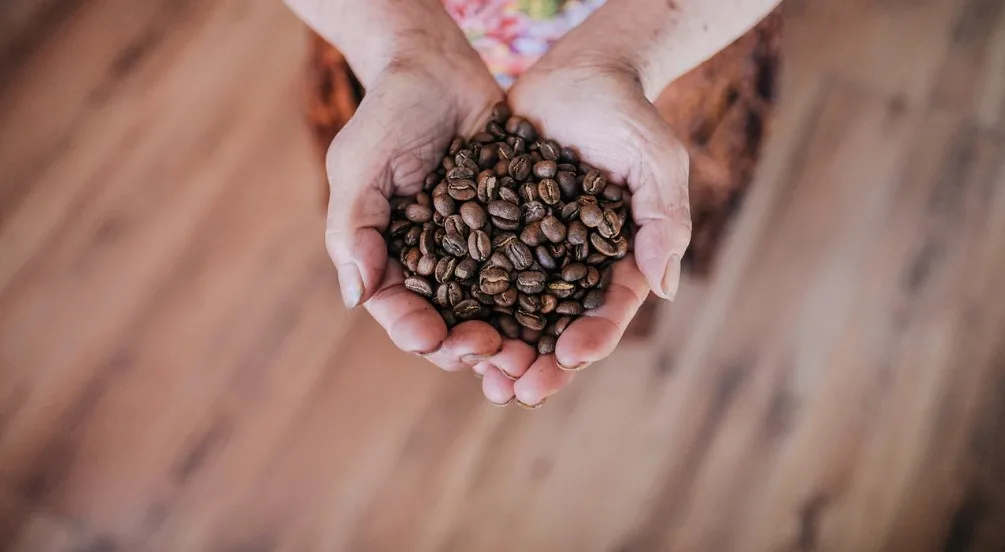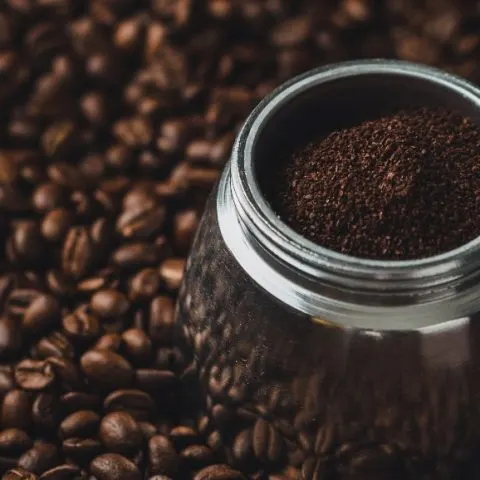When you grind coffee before brewing, you ensure freshness and perfect flavor. But you may be wondering how to grind if you don’t own a miller. It’s possible to mill without a coffee miller and instead use coffee grinder alternatives. These are the simple tools you can find in your kitchen like roll pin, blender, and more. These tools help you enjoy fresh coffee and spares you from buying pre-grind coffee beans.
These coffee grinder alternatives are as follows:
Mortar and pestle
Pharmacists and cooks use them to grind herbs, spices, and medicine into powder. The use of mortar and pestle involves hammering and rolling motion to help form a uniform texture. This method gives you control for a range of grinds from coarse to fine size.
Procedure
- Fill the mortar ¼ full with coffee beans to allow easy control
- Hold the pestle with the dominant hand while the other hand holds the mortar in place.
- Use the pestle to crush the beans in a twisting motion.
- After crushing, use a pestle to roll the beans around the bowl until you see a uniform texture.

Grinding coffee beans in a blender
A blender blade chops coffee in an almost manner like a grinder. It’s wise to use a blender in short and quick bursts, as running it continuously overheats the natural oils resulting in bitter coffee. This method produces a relatively excellent grind size.
Procedure
- Select grinder if the blender has it or medium-high speed if it doesn’t.
- Pour some beans into the blender and close it well.
- Grind the beans in a pulse technique.
- Keep tilting it to ensure all the beans grind evenly.
Use of a rolling pin
A perfect rolling pin can crush and grind beans. This method can produce an even texture and fine grind size. It requires a little more energy and keenness to achieve better results. Ensure you observe hygiene while crushing.
Check this too: How to Grind Meat Without a Grinder
Procedure
- Place a measured amount of coffee beans in a cleans Ziploc bag.
- Place the bog on a flat counter, press down, and crush the beans.
- Once crushed, roll the pin over the beans, pressing hard enough to break the fragments.
- Rollback and forth to reach your desired texture.
Use a hammer
A meat tenderizer, mallet, or hammer can easily crush your beans. Be more cautious as you crumble them to avoid any injuries. This method gives a coarse to medium grind. It requires you to press down the seeds and not pounding on them.
Procedure
- Place some amount of coffee in a plastic bag or parchment and fold the edges.
- Use a hammer to press down firmly on the beans until you get the perfect texture.
- Ensure you crush from one side of the bag and move over to the other.
A food processor
Grind using a pulse technique like in the blender. The short successive increments ensure the less heating of the beans, which can destroy the flavor. This method produces a medium coarse texture.
Procedure
- Place some amount of coffee into the processor bowl and place the lid firmly on top.
- Use the pulse technique and tilt the processor side to side to make sure the larger portions of the beans move into the blades.
- Grind the beans until you achieve the perfect texture.
Is it okay to grind the beans a night before?
You can (especially if you hate the grinder noise in the morning and don’t own a silent coffee grinder), but you have to preserve it well to ensure you don’t compromise the quality. Green beans only stay good for 15 years, roasted for 15 days, and if you grind for 15 minutes. Therefore, if you grind, preserve your coffee in vacuum-sealed, opaque containers to prevent it from contamination.
Grinding coffee beans earlier exposes them to the atmosphere, and they are oxidized and quickly go stale. Again, most of the flavors and aroma get easily lost through volatilization. Additionally, the beans readily absorb water from the environment and fringe, too, if stored there. Absorption of moisture dilutes the seeds’ oils, which are essential to adding flavor.
Pre-ground coffee has high chances of contamination, especially the oils, which are very delicate. The odor gets tainted and might give you a bad tasting experience. The beans’ carbon iv oxide gets depleted, and it’s essential in getting the oils out of the coffee. It escapes into the atmosphere when the ground coffee is left exposed. It’s advisable, therefore, to store your milled coffee well or else use fresh coffee beans.
Can you brew beans without grinding them?
You can brew coffee without grinding, though it will take more time, and probably your water will have cooled down. When you mill coffee, its surface area increases contact with water, and brewing becomes faster. On the contrary, gridding exposes the particles to environmental factors such as light, extreme temperatures, gases, which affects the flavor.
Also, if you use a poor-quality grinder, it results in uneven sizes of coffee particles. The smaller sizes will brew faster while the larger ones will take time, eventually turning bitter. Therefore, it’s better to use a quality grinder or coffee maker to enjoy a perfect coffee cup. You can purchase the two tools at an affordable price and hassle-free.
Grinding coffee without a grinder requires patience and a little more energy. Using a mortar and pestle proves a perfect alternative method in case you don’t own a grinder. But while having one, ensure you enjoy the best coffee flavor since it’s easy to grind.
Check this too: How to Grind Spices Without a Grinder

